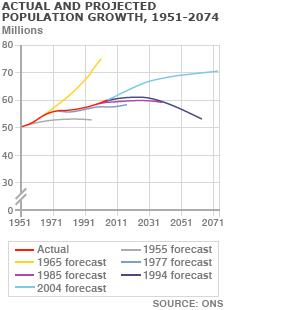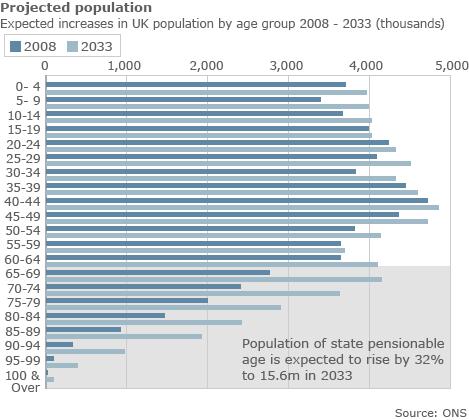Confused messages about immigration
Had you flicked through last week's papers, you would be forgiven for thinking that Britain's population is certain to hit 70 million within 25 years.
“In just 24 years the number of people living here will rocket by 10 MILLION”wrote The Sun; “Every year 425,000 more people will be living in the UK”reported the Daily Mail; “The huge growth will take place in less than half the time it took to go from 50 to 60 million between 1948 and 2005” declared the Daily Express.
The truth is anything but so certain. The Office of National Statistics (ONS), which released the figures, is at pains to point out that its projections are not forecasts. This may seem purely pedantic, but the difference implied by the ONS is absolutely crucial to understanding the nature of these figures. All the figures, it says, are based on the estimated population at the middle of 2008 and a set of demographic trend-based assumptions about future fertility, mortality and migration, and that therefore they provide the population levels and age structure that would result if the assumptions made were to be realised.
So these predictions will only become reality if all the assumptions made about rates of births, deaths and immigration are true. Yet, the one thing we can be certain of is that this will not be the case. The credit crunch has already resulted in a marked decline (estimated to be 44 per cent) in immigration since the 2008 figures upon which the projections are based. Furthermore, the levels of immigration are volatile; in the 80s and early 90s net immigration was negative, by the millennium it was over 150,000 a year.
Therefore, the certainty placed by almost all the press on these figures is entirely misleading; all reports should have been in the conditional tense. In the words of Guy Goodwin, ONS director of population statistics, “really, they're just a benchmark that policy-makers and politicians can look at and say, 'this is where we are heading if things continue very much as they are'.”
Want more proof that the figures aren't certain? Just 10 years ago the same report projected that the population will peak around 2036 and then gradually start to fall. Go back a bit further and the reports are even more wide of the mark. In 1965, the population at the turn of the millennium was projected to be about 76 million.

One further point to be raised from the report is that of the misconception of immigration. The ONS puts the birth and death rates into one category called 'natural change' and then compares this to migration. This creates figures that over 2/3 of the projected population rise would be caused by immigrants and their subsequent children in the UK. This is technically true, but it leaves the impression that immigration is more important to our population growth than new births.
In actuality, there are around 4 new babies for every net immigrant, but in measuring natural change the ONS subtracts about 3 babies to offset the numbers who are dying at the other end of their lives. Were they to take off the proportion of migrants and births to offset the deaths, then the significance of immigration could perhaps be seen in a better context.
Whilst the birth rate and immigration are projected to remain pretty constant, the death rate is projected to decrease, meaning that more people will live longer and that 3.8 million more pensioners are projected for 2033.

This figure is astounding when considered that the ONS predicts that the net growth without any migration would be 3.3 million. Therefore, without any migration, the ONS projects that the under-66 population of the UK would actually shrink by about half a million (very few of the 3.8 million new pensioners would be immigrants). Thus, in terms of age demographics, the real 'immigrants' over the next 25 years will be the millions who would have died in the past but now are living on.



